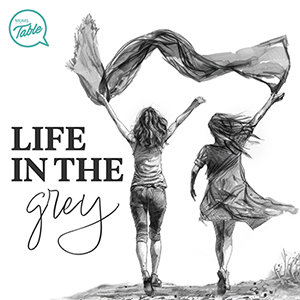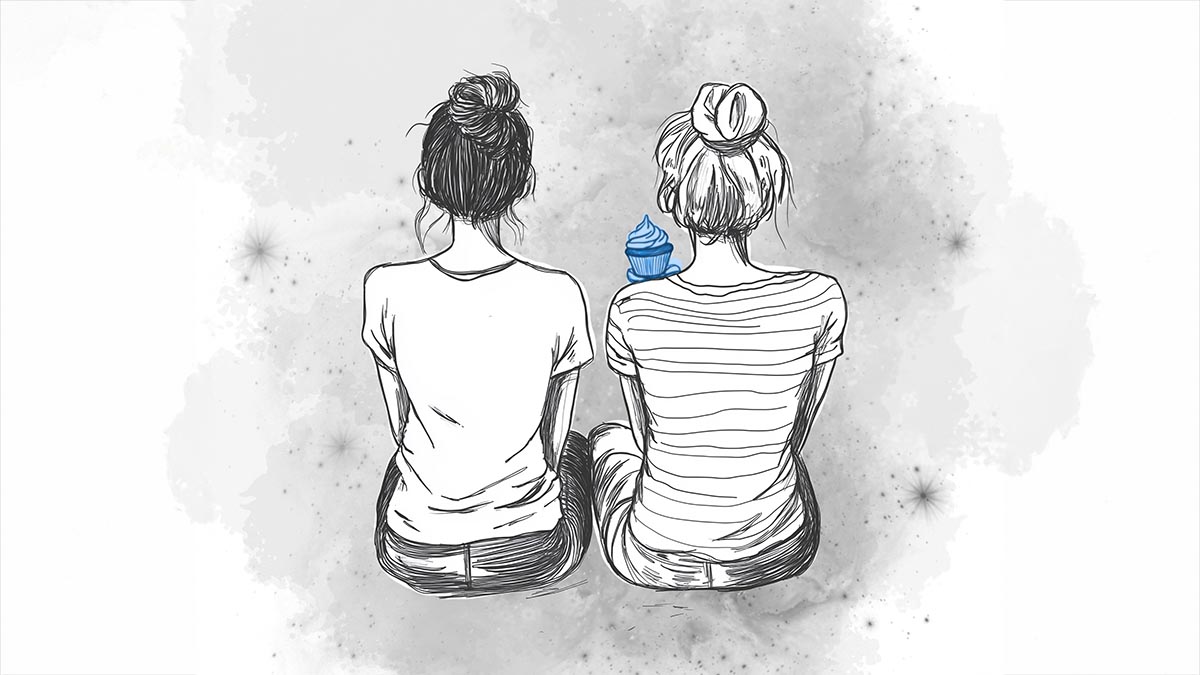Teaching kids about balanced eating starts with our language. Avoid negative messaging to help them build a healthy relationship with food.
They’re probably the type of food labels we’ve all grown up with. I’m not talking about the table-like image that details the nutritional content of almost every packaged food item. I’m referring to what we would call some food.
My parents often used terms like “junk”, “bad” or “unhealthy” for certain types of food when I was growing up. Sometimes, they’d mix things up by saying “it’s not good for you”. Thankfully, they wouldn’t go so far as to restrict me from having said foods entirely, often simply telling me not to have too much of it.
To my parents’ credit, their attitude towards food was perhaps one of the reasons that protected me from developing disordered eating (more about that later). After all, mine was probably the generation that kickstarted our society’s obsession with being thin.
We were the ones who ushered in globalisation and a new media that enabled us to chase unattainable beauty standards on a whole different scale. We started a culture where celebrities are scrutinised and criticised for their bikini bodies (or lack thereof), cellulite or for “letting it go”. We’ve seen the lemon detox diet, the low-fat diet, the keto diet, the clean diet and numerous other fad diets come and (mostly) go.
It would appear some of our present struggles with body image and food may have stemmed from this type of food labelling, or “food morality”, as mental health experts are now calling it.
Good food, bad food
When we call food “bad”, “sinful” or even “fatty”, we unconsciously assign a moral value to it. What can happen is that we then associate the consumption of that food with a behaviour value. So when we eat “good food” we are being “good”. If we eat “bad food”, we are then behaving “badly”. With all of that comes shame and guilt when eating something “bad”.
While calling food “bad” doesn’t cause all of us to develop eating disorders, many people who have disordered eating or eating disorders develop it because of the moral implications of consuming certain foods.
My parents may not have had the full realisation of what they were doing, but when they coupled “bad” food with “don’t have too much”, they may have prevented me from developing an entirely unhealthy relationship with food.
There are others, who upon labelling a food “bad”, would decide they had to completely give up on it. If you’ve ever tried something like that, you would know it’s next to impossible to ban most foods from your life—forever. This then leads to either obsessing over your actions, developing into disordered eating, or feeling like a failure and giving up entirely.
A note about disordered eating
We are probably familiar with eating disorders such as anorexia and bulimia, but there is a type of eating behaviour that is equally harmful to our bodies that doesn’t get talked about as often.
Disordered eating is a type of eating pattern that can include restrictive dieting, compulsive eating or skipping meals. Think “clean” foods or “low-fat” foods, or even simply “going on a diet”. It can often be disguised as a “lifestyle choice”, where we choose to eliminate certain types of food from our diet. Often, disordered eating can lead to or is a sign of an eating disorder, which is a mental health problem.
My son and I are vegetarians, which I know sounds a lot like a “lifestyle choice” and restrictive eating. Certainly, studies have shown a link between individuals with an eating disorder and being vegetarian.
However, my main motivation for not consuming meat stems from my queasiness toward eating something that used to be alive, a religious practice, as well as research into the environmental, health and ethical benefits of a plant-based diet. I’m not vegetarian because I’m watching my calorie intake—I like ice-cream and chocolate far too much for that!
Food for purpose not morals
Thankfully, under my parents’ influence, I grew up with a message of moderation and not restriction. Then, as I learned more about nutrition, it was easy for me to adopt the idea of consuming food for the purpose it served: Long-lasting energy (low-GI foods), feeling fuller for longer (high-protein foods) or to de-stress (high-sugar foods).
Focusing on eating a variety of foods from the five main food groups is a good start. These foods provide us with the nutrients our body need to function, or in the case of our kids, grow. It also doesn’t mean we can eat copious amounts of anything or everything, since moderation is key, and we need different serves or quantities from the various food groups for optimal performance.
There’s even a place for high-sugar or high-salt foods, or those high in saturated fat. Cakes, chips, chocolate, biscuits and lollies can’t be found in the five food groups, but we all enjoy them. This simply means having them less regularly but not feeling guilty when we do consume them.
I talk more about the guilty feelings I developed after eating chocolate in the Mums At The Table podcast, Life in the Grey.
What does this mean for our kids?
It’s challenging trying to avoid putting moral values on food when talking to my son. Telling him, “Don’t have that, it’s bad for you” is certainly much more efficient than saying “Yes, you can have that, but in moderation, because when you consume too much of it, it makes your body feel awful. It also doesn’t serve any nutritional value which means it doesn’t help your body to grow well.”
Imagine saying that, or some iteration of it, every single time he asked for a lolly. Or a packet of chips. Or a biscuit. Or . . . (excuse me while I go rock myself in a corner)
On the other hand, I have seen the impact when he knows what purpose specific foods have. Since we’re vegetarians, linseeds are our only source of omega-3s. My only problem is my son absolutely detests linseeds to the point where he would try to pick every single tiny linseed out of his bowl of cereal.
One day, during our almost daily debate about why he needs to eat the linseed, I off-handedly remarked that linseeds were important because they help his brain to grow. I kid you not: I no longer have any arguments with him about eating linseeds. He’s even asked for more linseeds for breakfast.
I have tried that same technique on plenty of other foods since then. It requires a whole lot more effort and a whole lot more research. I am now a pseudo-nutritionist because I have discovered my son responds better when he knows the purpose of the food he’s eating.
Of course, this doesn’t mean he no longer has lollies, chips, biscuits or ice-cream. Like most children, he still loves eating them because they taste great. However, he also understands the impact of these foods on his body, which makes it easier for him to accept it when I say “no” after he’s asked to have his fifth lolly that day. It doesn’t mean he doesn’t get all huffy, I just don’t need to spend as long having an argument with him.
So, do I feed my child lollies? Yes.
Lollies are not eliminated from his diet and I definitely don’t tell him they’re bad for him, at least not in those words. However, most of the times, as mentioned, I do restrict how much he can have. After all, I’m still a mum who can’t help herself, even though I’ve read advice from experts who assure us that children can self-regulate, their sugar intake included.
Funnily enough, there are times when I’ve simply felt too tired to put up a fight about the quantities of lollies or chips he has eaten and, as the experts suggest, my son did voluntarily choose to stop (often far later than I would prefer, but he did stop).
Maybe I simply need to trust him more.
Now that is a lesson I still need to put into practice.
Read next: What should you feed your child?
Tune in to the Life in the Grey podcast

Life isn’t always black and white. Life in the Grey is a Mums At The Table podcast where we explore the psychological factors that shape our relationships, be that as a parent, a partner or a peer. And don’t worry—it’s short because we ain’t got time for fluff. Expect practical takeaways that you can apply to your own life, whether it’s navigating parenting challenges or finding balance amidst life’s demands. Join us each month as we share stories, insights and reflections that encourage personal growth and foster a sense of connection in our community.
How helpful was this article?
Click on a star to rate it!
0 / 5. 0
Be the first to rate this post!
Melody Tan
Related posts
Subscribe
Receive personalised articles from experts and wellness inspiration weekly!

